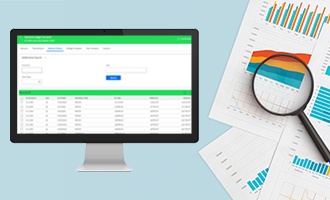
All accounting professionals dread month-end reconciliation. Between the ticking and the inevitable hunt for a needle in a haystack, this can be a time-consuming and mind-numbing experience. I come from an accounting background and know this all too well. That’s why I’d like to offer you three ways to keep your Infor CloudSuite Distribution (CSD) chart of accounts balanced to simplify the process and save you time.
1: Trial Balance Reports
Out of the box, CSD offers a wide array of trial balance reports. These reports compare the subsidiary total to the general ledger and calculate if they are in balance or not. The reports can be used for reconciliation when in balance.
Popular Reporting Acronyms & Descriptions Inside CSD:
Other accounts:
These easy-to-use reports inside of CSD can help with reconciliation documentation as well as pinpoint any discrepancies.
2: Scheduled Reports & Balance History
Another one of my favorite time-saving features inside of CSD is the ability to set up the trial balance reports to run on a schedule. Trial balance report scheduling allows you to print, email, or even save a file of the report. Then when the report is run, it creates a record inside the general ledger. An example that comes to mind is when the AP trial balance runs, the results are stored in the general ledger account inquiry screen under the tab of balance history.
Below you’ll see a variance comparison report showing the difference between the last time it was run and the current report. You’ll notice it also includes crucial data like report total, GL total, and the difference. By running this report daily, you gain the ability to isolate down to the day when reports went out of balance.

3: CSD Events
Topping out our list is a must-use, time-saving feature in CSD called, event manager. Events are basically notifications that specific actions took place. The nice thing about CSD is that it comes with over 100 prebuilt event types that can be configured to fit your business needs.
Suspense postings are made in the general ledger when CSD does not know where to make a specific posting. This can happen for many different reasons, but normally it is related to a GL mapping issue. My go-to event to keep the general ledger clean and balanced is an alert when a suspense posting occurs, which can be emailed or printed at the time of the event. Through the use of events, you can isolate the problem and correct the discrepancy before it muddies your data and creates extra work for you.
Month-end reconciliation may never be a fun process. But if you use these tips inside CSD, you can significantly simplify the process and save yourself quite a bit of time too.
At Aktion, we have an entire team of Infor CSD experts who understand your software inside and out. We know keeping your chart of accounts balanced in CSD can be stressful and time-consuming, that’s why we’re here to help. Contact us to be connected to a qualified CSD consultant to review your current process and provide insight into how you can streamline your processes.

Over the course of 10+ years, Mike has worked in the distribution industry wearing many hats including accounting, finance, and customer service. During his time working in the industry, Mike spent most of it working for an industrial distributor that introduced him to the Infor product line. Now Mike is part of the Aktion team, using his industry and end-user experience to help Infor users to better utilize their Infor A+ and Infor CloudSuite Distribution (CSD) software.